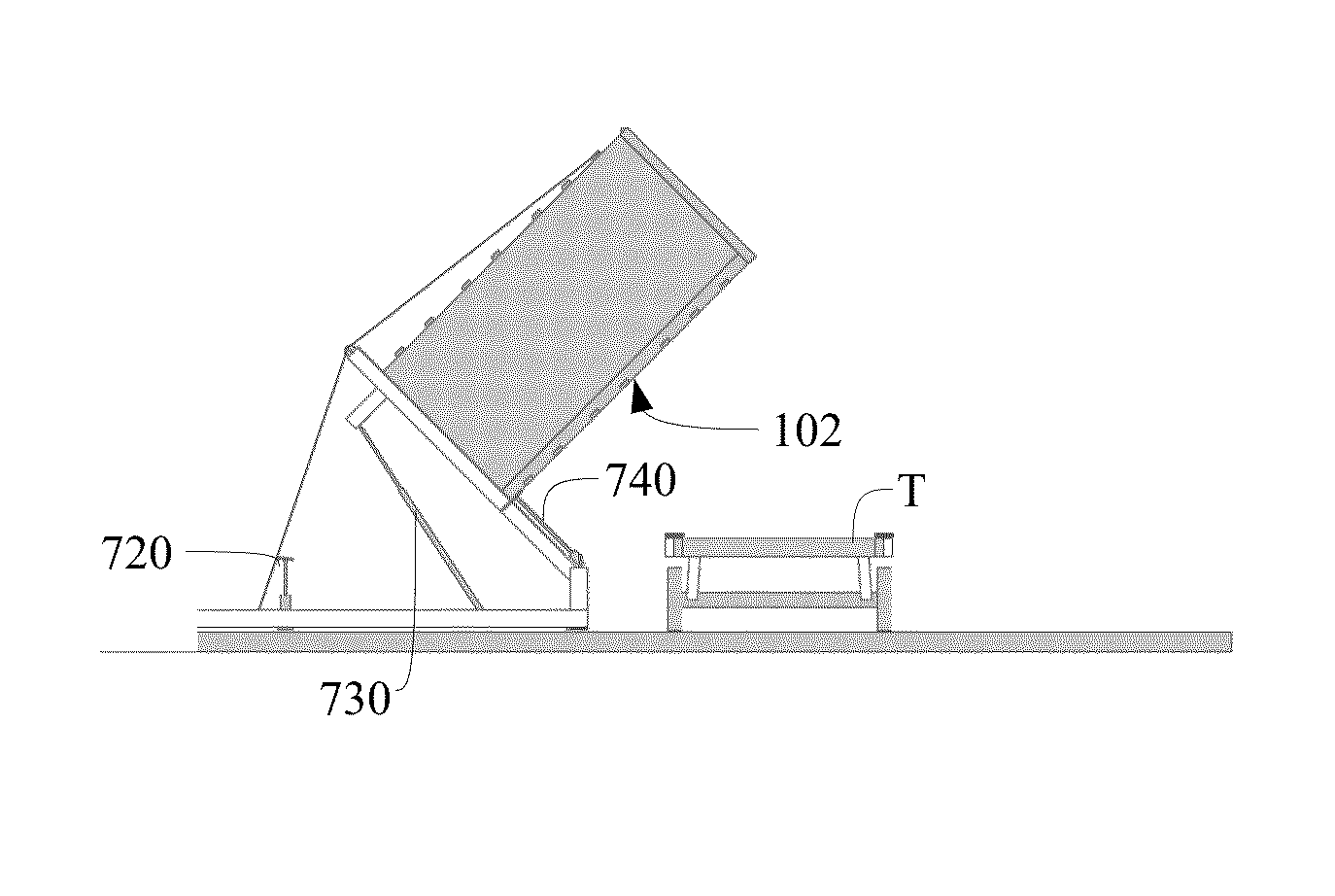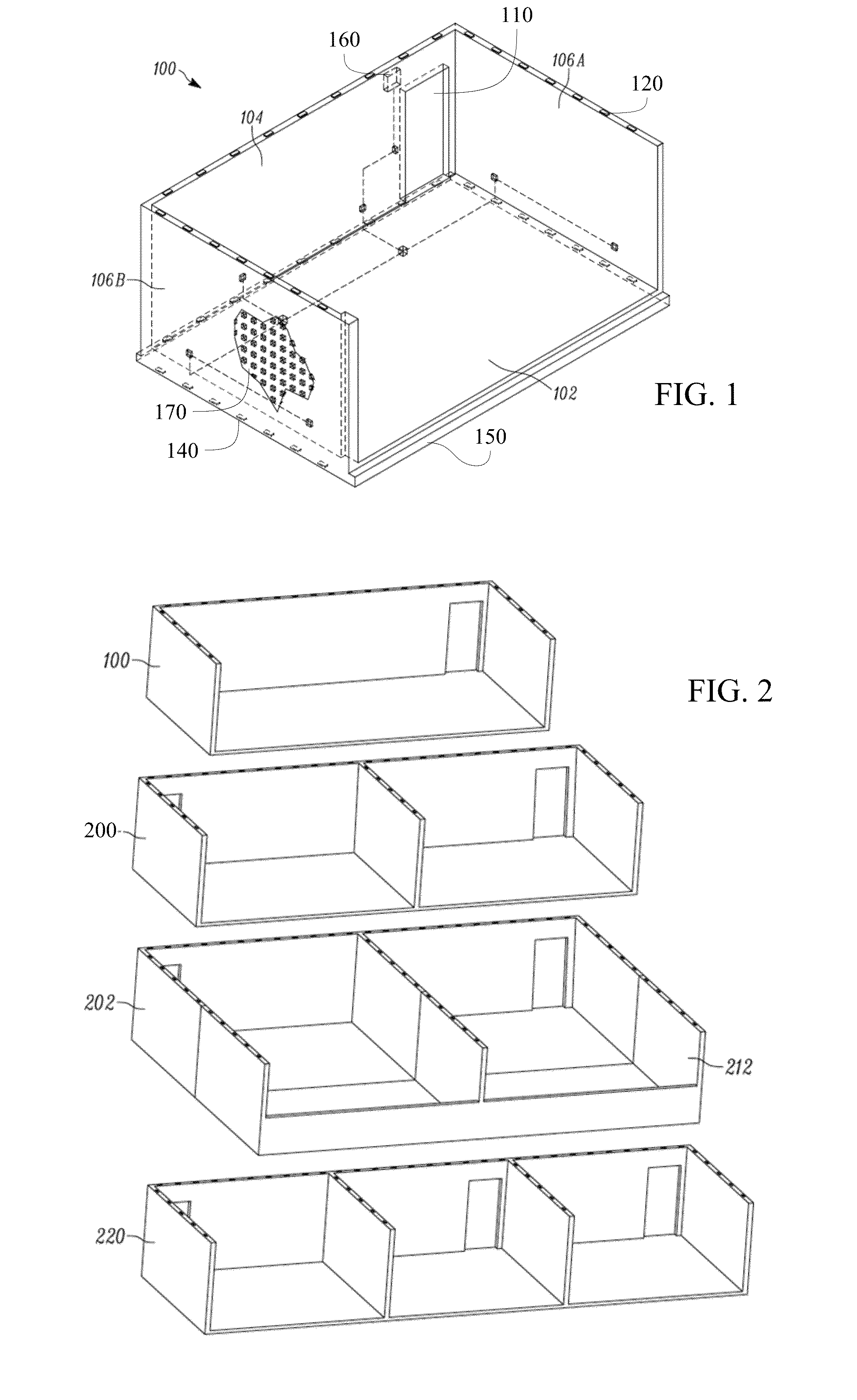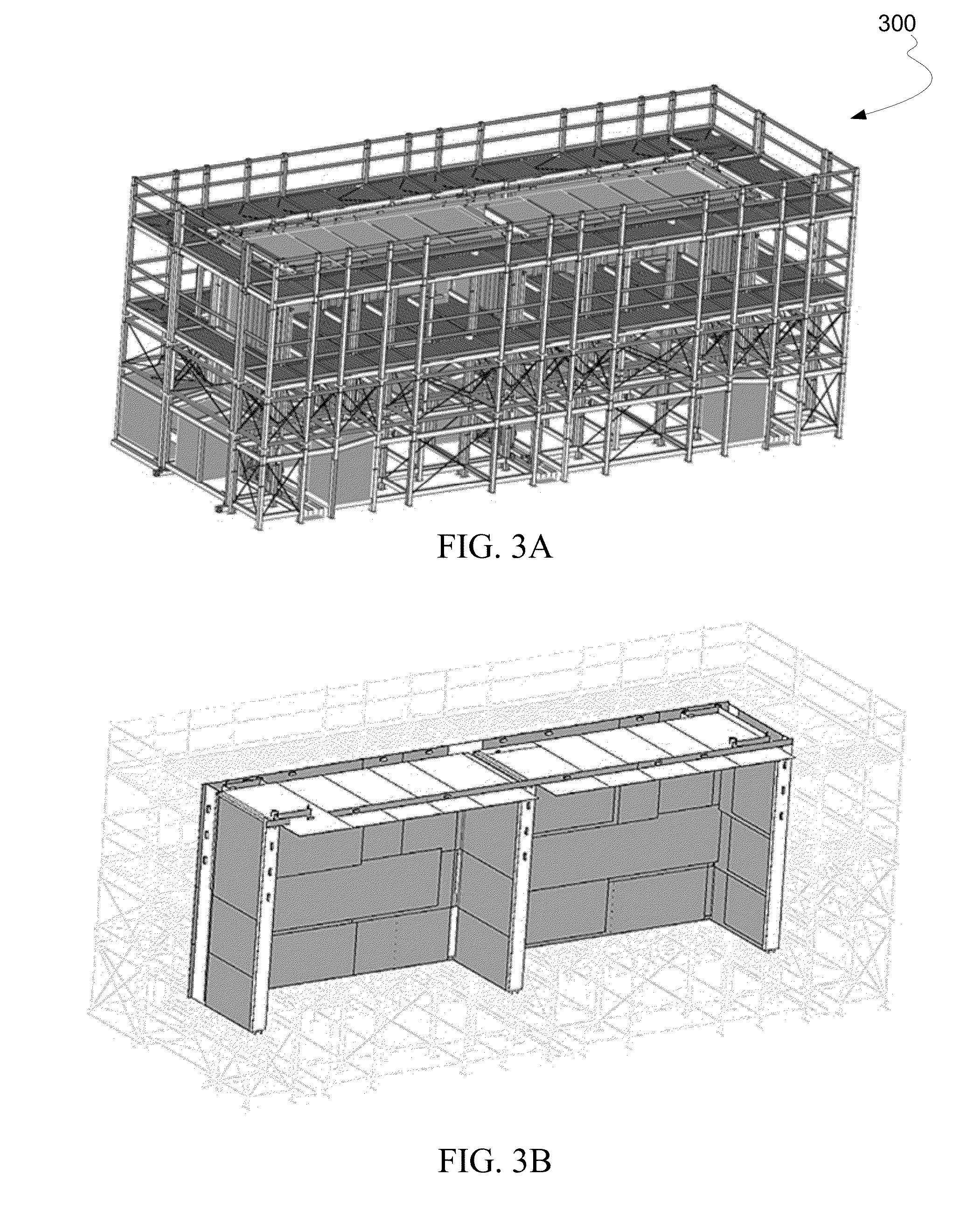Portable robotic casting of volumetric modular building components
a technology of volumetric modular building and robotic casting, which is applied in the direction of shaping building parts, programming control, form/shuttering/falseworks, etc., can solve the problems of limited application, same negative consequences of remote fabrication, and limited modular building unit configuration of the prior art in terms of dimensional and design flexibility, so as to facilitate ejection, rotation and loading, and reuse on other projects. cost-effective
- Summary
- Abstract
- Description
- Claims
- Application Information
AI Technical Summary
Benefits of technology
Problems solved by technology
Method used
Image
Examples
Embodiment Construction
[0083]It is useful to first describe an exemplary modular building component as background for the description of the RCM according to aspects of the invention. As will be recognized by those of ordinary skill in the art, the modular building components and the RCM described herein, as well as the related processes and systems incorporating such modular components and RCM, are regarded as aspects of the invention.
[0084]FIG. 1 illustrates an exemplary building component module, consisting of a single dwelling unit 100. A number of such modules may be assembled to form a building structure with many such housing units. Modules 100 may include a module floor slab 102, a longitudinal wall 104, which may form an interior (i.e., hallway) wall when the module is assembled in a building. Two transverse walls 106A and 106B extend from opposite ends of the longitudinal wall 104. The floor and each of the walls may serve to demise the living space, separating it from other living spaces in the...
PUM
| Property | Measurement | Unit |
|---|---|---|
| molding | aaaaa | aaaaa |
| movement | aaaaa | aaaaa |
| lifting force | aaaaa | aaaaa |
Abstract
Description
Claims
Application Information
 Login to View More
Login to View More - R&D
- Intellectual Property
- Life Sciences
- Materials
- Tech Scout
- Unparalleled Data Quality
- Higher Quality Content
- 60% Fewer Hallucinations
Browse by: Latest US Patents, China's latest patents, Technical Efficacy Thesaurus, Application Domain, Technology Topic, Popular Technical Reports.
© 2025 PatSnap. All rights reserved.Legal|Privacy policy|Modern Slavery Act Transparency Statement|Sitemap|About US| Contact US: help@patsnap.com



